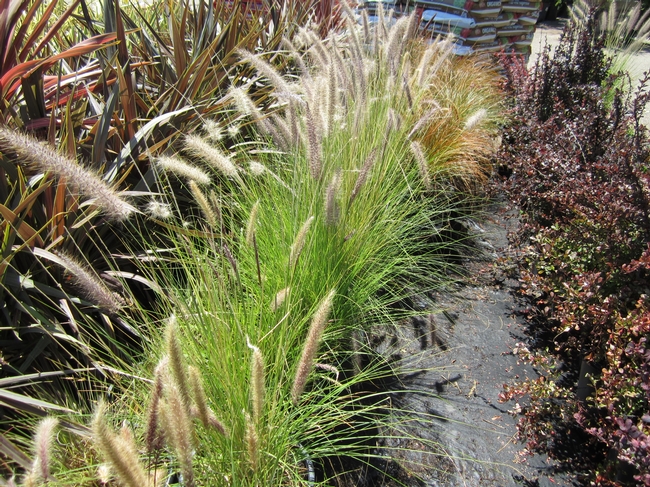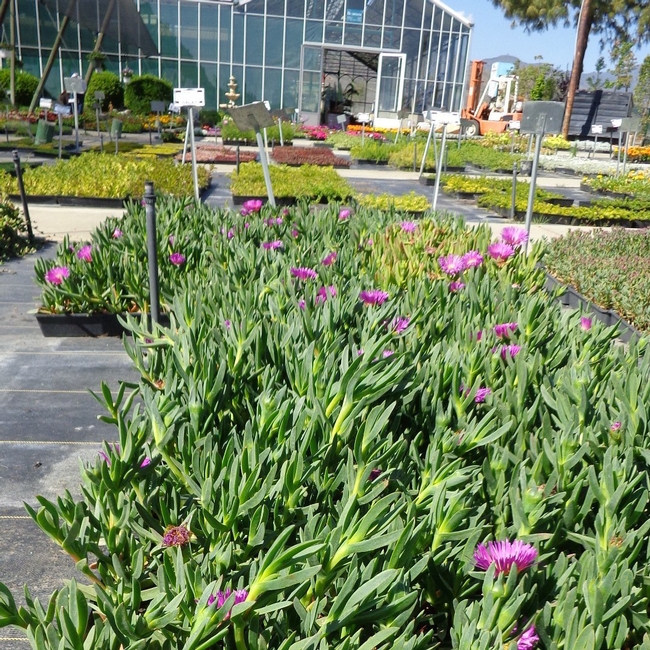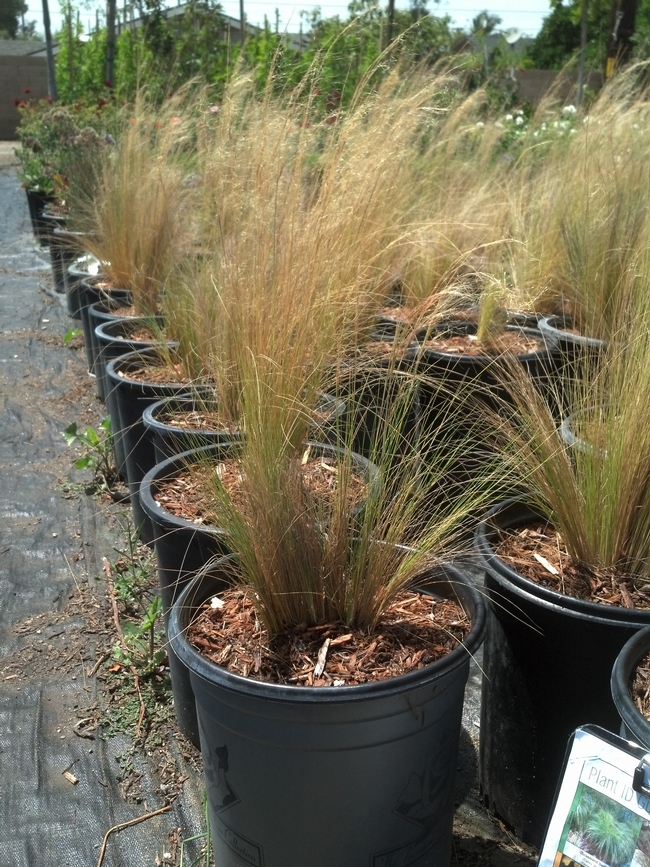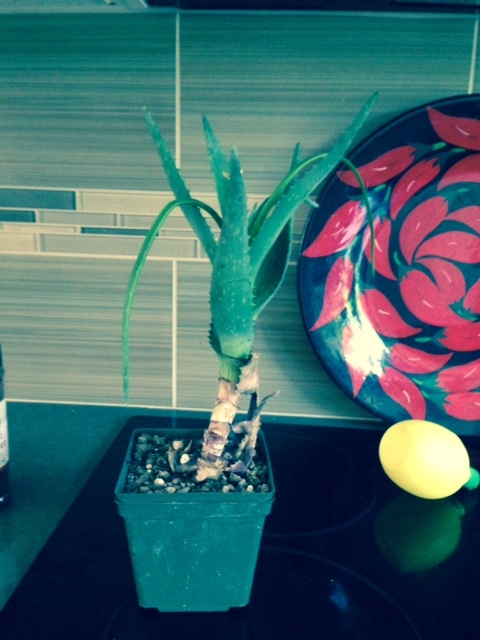From the UC Blogosphere...
The Buzzword is 'Almonds'
The wait is over. It's almond pollination season again in California. We spotted a lone almond tree blooming in Benicia on...
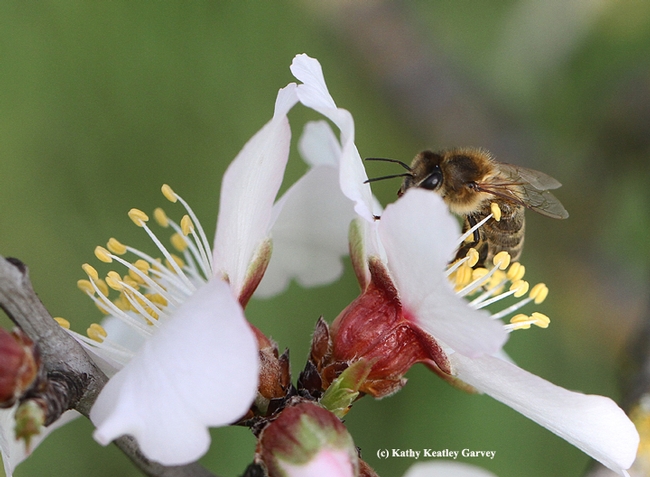
A honey bee peers over an almond blossom on Bee Biology Road, UC Davis. (Photo by Kathy Keatley Garvey)
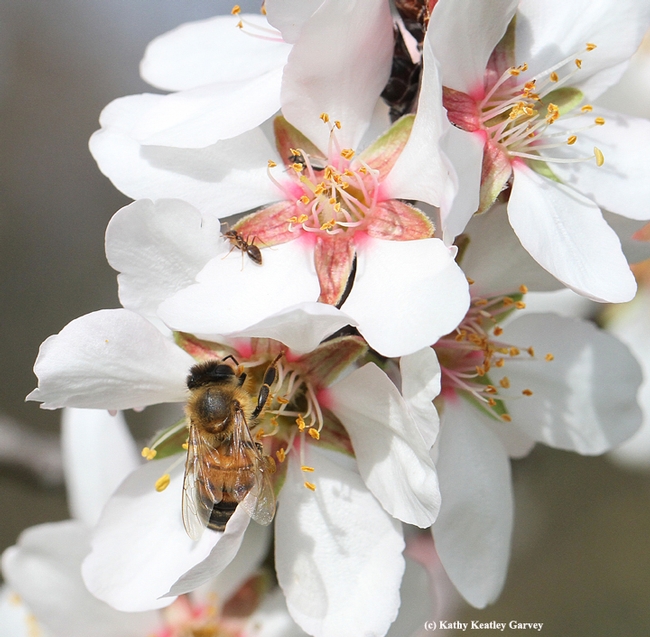
Cousins: a honey bee and an ant. Both belong to the order Hymenoptera. (Photo by Kathy Keatley Garvey)
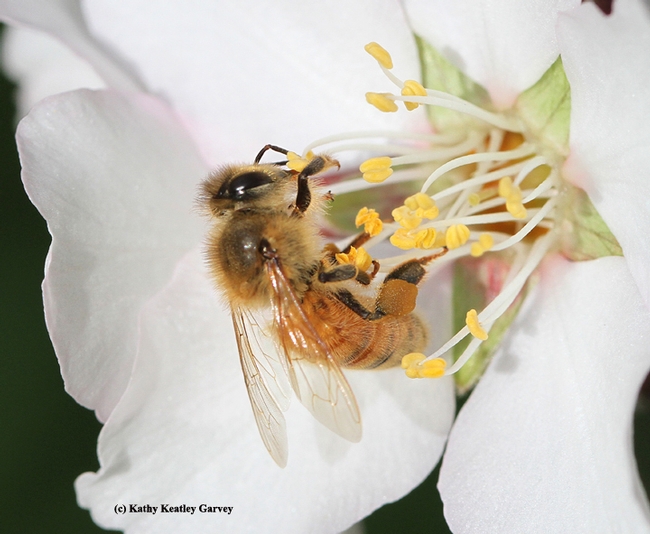
Close-up of a honey bee pollinating an almond blossom. (Photo by Kathy Keatley Garvey)
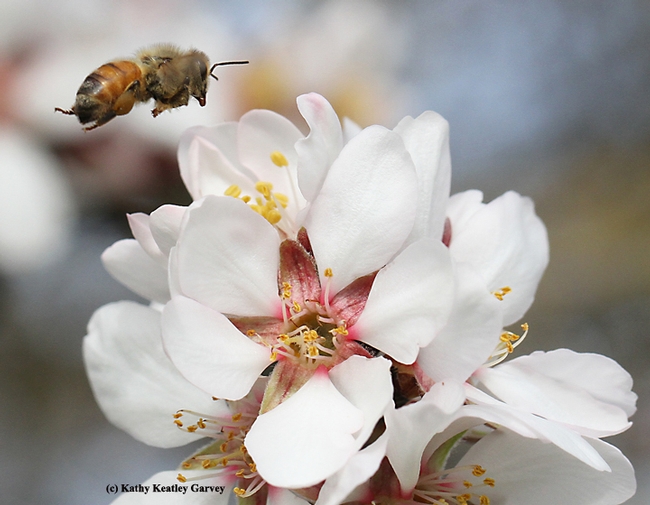
Honey bee heading for the next blossom. (Photo by Kathy Keatley Garvey)
Help Stop Invasive Garden Plants from Overrunning California's Landscapes!
This spring, PlantRight is conducting its 6th Annual Spring Nursery Survey! UC Master Gardener volunteers can help PlantRight track the availability of invasive plants by simply visiting local nurseries. Check with your local county program coordinator to find out if your program offers volunteer hours for participation.
Participation in the 2015 Spring Nursery Survey is easy, educational, and fun! Volunteers will:
- View an online training
- Download required survey materials (e.g. survey form & plant ID key)
- Sign up to survey a randomly selected store in their county
- Visit the store and record information about any invasive plants being sold
- Submit information to PlantRight
The survey process takes approximately 2.5 hours to complete and can be done with other volunteers - if approved by your county these hours can count towards certification volunteer hour requirements. Returning volunteers may view the full training or a shorter refresher video.
PlantRight will host two training webinars to reflect different survey periods for Southern California (San Luis Obispo, Kern San Bernardino Counties and south) and Northern California:
Southern California Webinar:
Monday, February 23rd, from 7:30 – 8:30 p.m.
Northern California Webinar:
Wednesday, April 15th, from 7:30 – 8:30 p.m.
Sign up at: www.plantright.org/survey-registration
“2014 saw many common invasive plants decline in availability, yet some are more popular than ever. Help us prevent the next big invasive by making the 2015 survey our most successful yet!” –Chris Crawford, PlantRight Survey Manager
2014 Survey Highlights
Thanks to the dedication of more than 120 UC Master Gardener volunteers last spring, PlantRight's 2014 survey was a huge success. Drawing from data collected at 226 stores in 35 counties across the state, PlantRight saw a decline in the availability of invasive plants from their original list, from around 30% in past years to 19% of stores surveyed.
Driving this positive change was a large decrease in periwinkle (Vinca major), dropping from 17% in past years to 9% of surveyed stores. However, the number of stores selling the most recently added invasive plants on PlantRight's list (updated in early 2014) increased. Notably, the drought-tolerant emerging invasive Mexican feathergrass (Nassella tenuissima) increased in prevalence from 27% in 2013 to 38% in 2014.
A comprehensive report and simplified fact sheet detailing the results can be found on the Spring Retail Nursery Survey – 2014 Fact Sheet. These results act as PlantRight's guiding light, shaping its strategy and helping it move forward collaboratively with the nursery industry.
2015 New Plant List
After a year-long review, PlantRight is very excited to share its brand new 2015 list of Suggested Alternatives for Invasive Garden Plants. This list identifies the top ten priority invasive plants for sale in California and provides recommendations on beautiful alternatives. Without the help of the UC Master Gardeners and the data collected from the annual spring survey, the new and improved list would not have been possible.
We are proud of what we've accomplished together with the UC Master Gardener Program, and look forward to working together again in 2015!
-- For questions, contact Chris Crawford, PlantRight Survey Manager, at ccrawford@suscon.org or (415) 977-0380, ext. 331.
How to Attract Bees, Butterflies and Birds: CCUH Workshop at UC Davis
So you want to create a sustainable landscape in your backyard. You want to create a living landscape that attracts bees,...
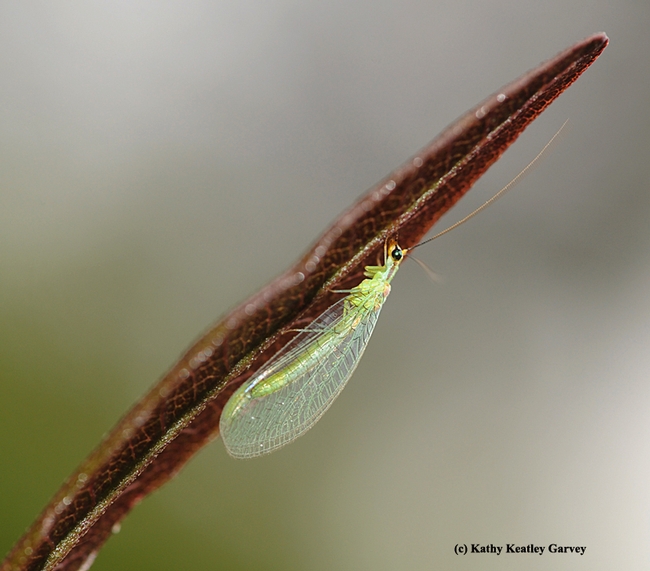
The lacewing is a beneficial insect in the garden. (Photo by Kathy Keatley Garvey)
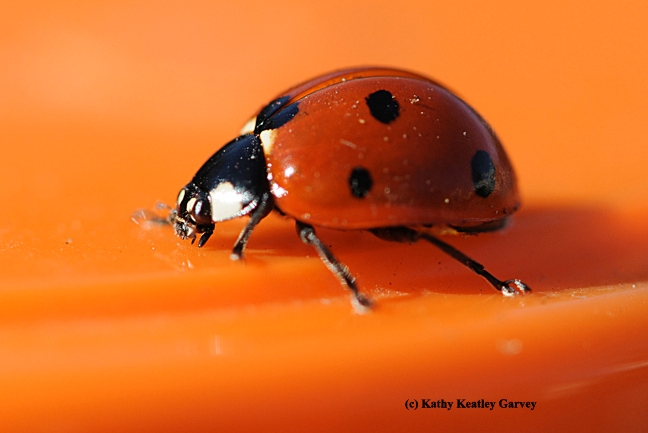
A lady beetle, aka ladybug, will eat aphids and other soft-bodied insects in your garden. (Photo by Kathy Keatley Garvey)
Repotting the Potted Indoor Aloe
Advice for the Home Gardener From the Contra Costa Master Gardeners' Help Desk
Client's Questions & Concerns:
Client called in and also sent email with picture asking whether her aloe needed repotting. Plant appeared to be in original 4" pot. She also wanted to know why the plant was drooping.
Response from the CCMG Help Desk
Thank you for contacting Master Gardeners about your aloe plant and whether it needs to be repotted. Based on the picture that you provided, your Aloe vera (Aloe barbadensis) would definitely benefit from repotting.
You want to choose a pot that is wider and deeper than the current plant, with space for the plant to grow. The new pot can be plastic or clay/ceramic. Given the top-heavy nature of an aloe you may want to use a clay or ceramic pot. Any pot you select should have one or more drainage holes in the bottom. You can use commercial cactus mix as your planting medium.
Before planting, lightly cover the drainage holes with a piece of clay or a screen. Note: Do not place pebbles or multiple layers of clay pieces in the bottom of the pot "to improve drainage". Recent research has shown that the pebbles do not improve drainage; they just limit the space for the roots.
To repot, remove the plant from the current pot, clearing away the old soil from the roots. I noticed that you have a "pup" in the corner of the current pot. You will want to cut the pup from the main plant. You can plant it separately if you want. Place the plant(s) in the new pots with the cactus mix. The main plant can be planted with the lowest leaves at the soil level, i.e., with the bare stem buried. Allow the plant(s) to rest out of direct sunlight without water for the first week or two after repotting. This allows time for roots that may have been damaged in the transplanting process to heal.
There are several environmental factors that could be causing the drooping problem. One is water. Aloes should be watered approximately once a week through the growing season (spring to fall). Aloes need less water during the winter, but you do need to make sure that it gets enough water to avoid shriveling. You especially want to make sure that the plant does not fully dry out once you start watering it this winter after the transplant waiting period is over. However, you should let it dry out the top 1-2" between waterings (you can stick your finger and/or popsicle stick to check, etc.).
A second factor is fertilization. The plant looks like it had some sudden new growth. Like many houseplants, aloes do well with regularly applied diluted fertilizer during the growing season, with no fertilizer during the dormant (winter) season.
A third factor is light. Your plant may need additional light. A west or south facing window is best. Care must be used when introducing additional light or moving the plant to a brighter location. The plant should be introduced to the additional light gradually to avoid scorching.
For more information on repotting and growing succulents and cactus see: http://www.csssj.org/welcome_visitors/basic_culture.html.
For specific information on aloes, see: http://homeguides.sfgate.com/plant-aloe-vera-container-80791.html and
for indoor succulents http://homeguides.sfgate.com/indoor-potted-succulents-dying-80564.html.
And for a view of Aloes and other succulents in a garden setting (with some in pots as well in the nursery), you should visit The Ruth Bancroft Garden in Walnut Creek. This is a world-class garden utiliizing succulents and other water-aving plants in settings that can be inspiration for your home and garden.
Good luck with your aloe.
Please let us know if you have further questions.
Contra Costa Master Gardeners Help Desk
Note: The Contra Costa Master Gardener Help Desk is available year-round to answer your gardening questions. Except for a few holidays, we're open every week, Monday through Thursday for walk-ins from 9:00 am to Noon at 75 Santa Barbara Road, 2d Floor, Pleasant Hill, CA 94523. We can also be reached via telephone: (925) 646-6586, email: ccmg@ucanr.edu, or on the web at http://ccmg.ucanr.edu/Ask_Us/
Composting
Composting By Tami Reece UCCE Master Gardener I have been thinking about making compost in my...



